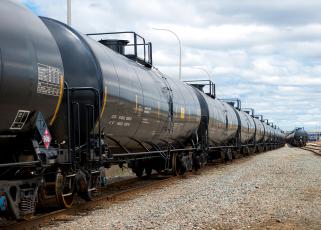By Chet Thompson
This piece originally appeared in the March 2023 issue of Hydrocarbon Engineering Magazine.
In a tight refined product market—which is certainly how we would characterize much of the past two years—it has been U.S. refiners that have stepped up. Our industry ran full-out for most of 2022 making sure American consumers, our domestic economic centers and our allies had enough gasoline, diesel and jet fuel to keep everyone moving. Our refining sector leads the world in liquid fuel production and is effectively doing more than any other to bring better balance to the global market.
This is a utilization story. The U.S. refining kit (which is how we refer to our collective refining machinery across nearly 130 refineries) is one of the two largest in the world, with approximately 18 million bpd capacity. It is also the most complex, which means we have the greatest capability to refine the toughest types of crude oil.
Our facilities process more crude oil every day than the U.S. upstream produces, and we make more finished fuels, collectively, than the U.S. consumes. For a kit of our size, to consistently have at least 90% of our refining muscle actively engaged in fuel production is a tremendous accomplishment, and a testament to the men and women of our industry who maintain our facilities and keep them running safely. To say I am proud of their work is an understatement.
Refineries regularly undergo maintenance, and every few years they undergo larger scale ‘turnarounds’ where production is halted and up to 1000 specialized workers—including engineers, electricians, pipefitters and steelworkers—come in to inspect entire facilities, refurbish units and complete building projects. As any veteran refiner will tell you, running full-out for as long as we have can be a source of wear and tear on facilities. And to maintain high utilization rates when the market was at its tightest, some facilities elected to reschedule planned maintenance if that could be done safely.
Safety is the key word. Everything we do in the refining industry begins and ends with safety. While the U.S. refining industry will continue to produce as much fuel as we safely can, there’s going to be some necessary dialing back for maintenance. Of course, ‘dialing back’ is relative, because U.S. refineries—even while some facilities undergo maintenance —are still likely to maintain much higher utilization rates than the rest of the world and continue leading in fuel production.
Refinery upkeep is a good thing because maintenance is a long-term investment in safe operations and will help us be ready, if needed, to run full-out for extended stretches in the future. And as an industry of ‘planners,’ refiners also have arrangements in place before any turnaround starts to make sure customers have uninterrupted fuel deliveries.
Even while facilities are being maintained, global fuel supply and demand will continue rebalancing with our contributions and with significant refining capacity projects preparing to come online around the world. This next phase of U.S. refinery leadership in a reconfigured global market is sure to be one to watch.
This piece was written by Chet Thompson, President and CEO of the American Fuel & Petrochemical Manufacturers (AFPM).
The American Fuel & Petrochemical Manufacturers (AFPM) is the leading trade association representing the makers of the fuels that keep us moving, the petrochemicals that are the essential building blocks for modern life, and the midstream companies that get our feedstocks and products where they need to go. We make the products that make life better, safer and more sustainable — we make progress.


